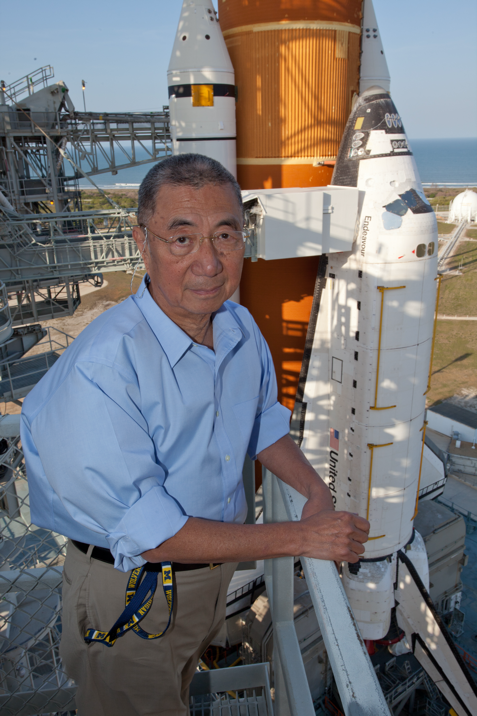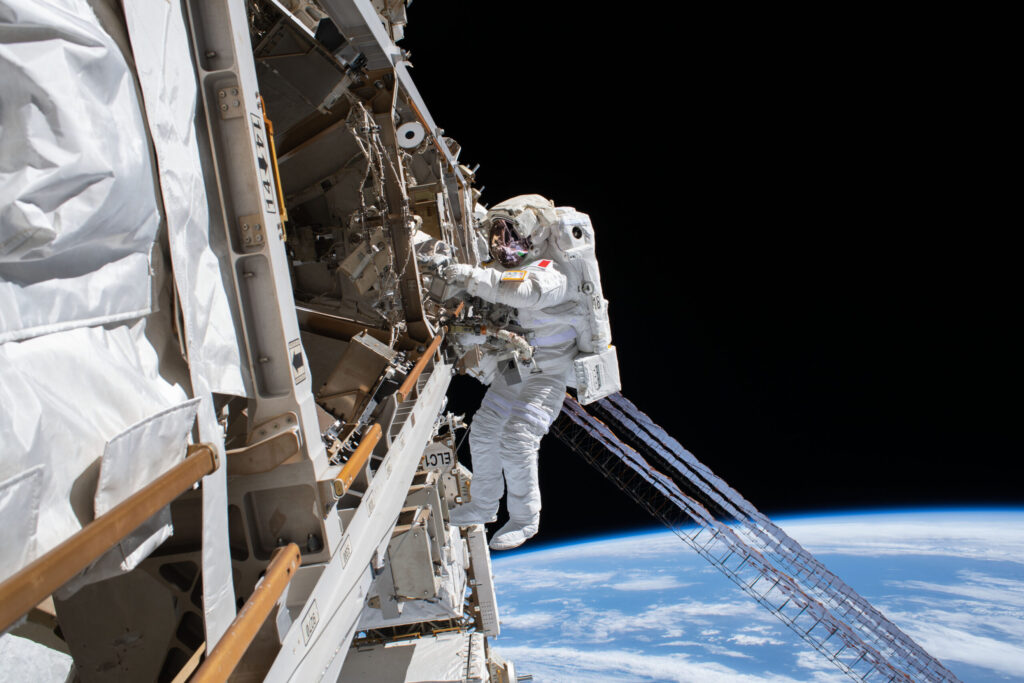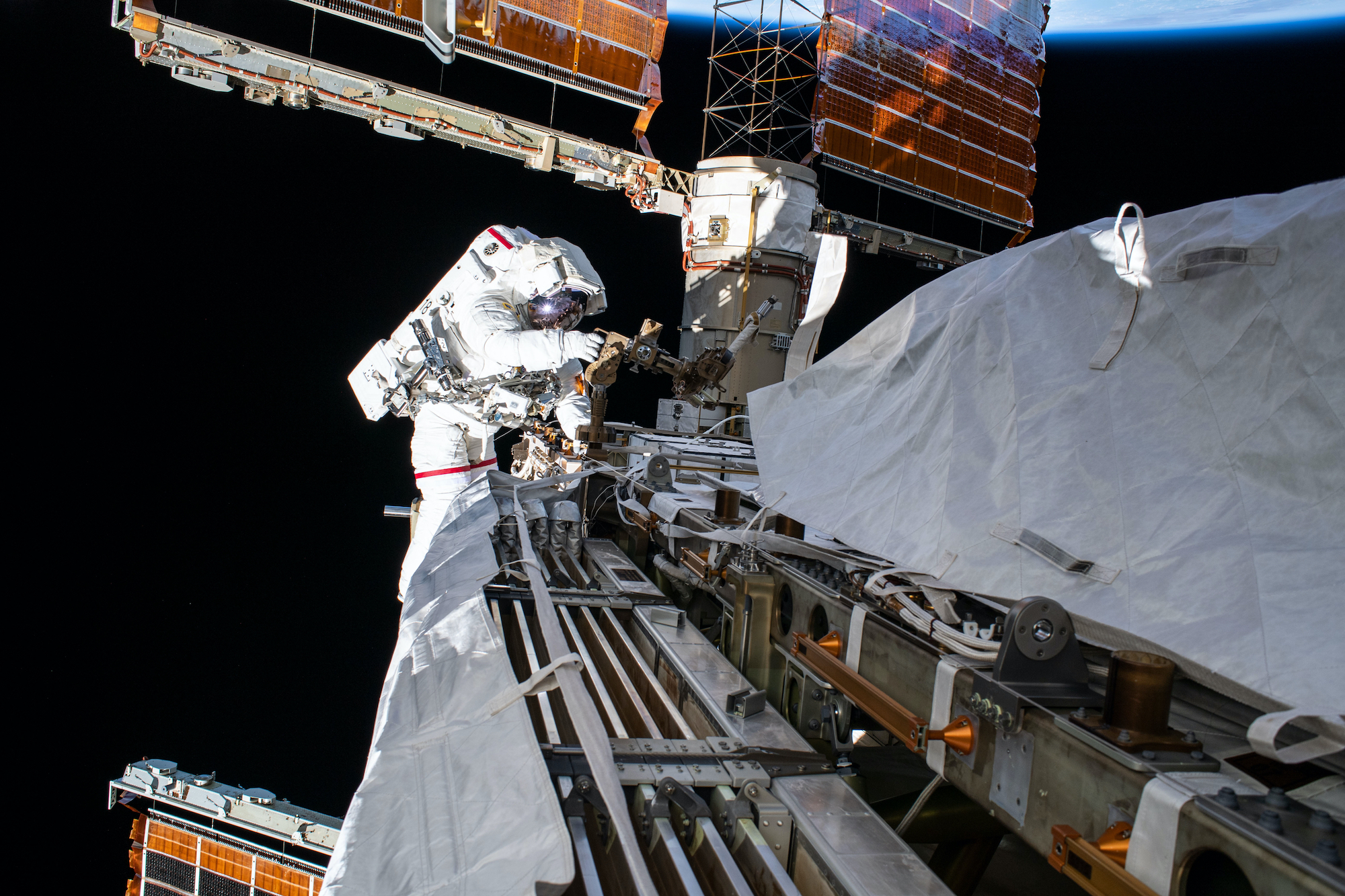The Alpha Magnetic Spectrometer, nestled outside the International Space Station, is one of the most fascinating devices aboard the International Space Station.
Developed by Dr. Samuel Ting, think of the AMS as a giant butterfly net in space. The reason we haven’t traveled further into our universe is that we are limited by current propulsion technology.
So, Ting developed a large space-based electromagnet designed to grab particles out of space as they travel through universes and galaxies. When they float by, the AMS grabs them for analysis.
Ting discusses the device in depth during Among the Stars from Disney+. The show centers around a special mission to repair the AMS. We recently interviewed astronaut Chris Cassidy about the show and mission as well.
The six-part series premieres on Oct. 6 and is available only on Disney+.
Innovation & Tech Today: The AMS is very fascinating. Can you tell me a little about how the idea for that came together?

Dr. Samuel Ting: Okay. You look behind me. It is a garden and a house, and that is our house near Geneva, Switzerland. I’m a professor at MIT, but I do most of my work at the European organization for nuclear research, near my son in Geneva Switzer in 1994, when the big accelerator in the United States in Waxahachie, the 87-mile SSC was canceled by the Congress. And I was walking in the garden. Thinking “what shall I do?” I’ve been doing experiments on the accelerators for all my career and I decided maybe I should do something new, something I know nothing about. So, I decided to do the AMS.
Then I remember I have done an experiment on the discovery of deuterium, known as heavy water. And in the early experiment of the national laboratory, I did an experiment to find anti-deuterium. Deuterium is made of a proton and a neutron in the nucleus. Anti-deuterium is antiproton and the antineutron. Yeah, the rate is very low. One in one hundred million.
I&T Today: My understanding is dark matter plays a big role in the AMS?
ST: Yeah. And I think if you look New York Times in June ’65 there was an article about that. And so, then I was thinking 90% up the universe cannot be seen. You know it’s there because the gravitational force and you cannot see, what is this dark matter?
And then I also ask myself, what are the true properties of cosmic rays. Major cosmic rays, you need to measure its charge, measure its mass measures, measure its distribution. To do that in space you need to put a magnet in space. And so, I also asked myself, how do you look for dark matter? You cannot see dark matter when they collide with each other and produce energy. Energy can produce ordinary matter. Nobody has ever put a magnetic cyclometer in space. And that is because a magnet, in lower Earth orbit, one end will point to the north, the other end will point to the south. That’s a north magnetic compass. And so, if you put a magnet in space, the space station will soon lose control, it will twist the north twist, to the surface. And then we figure out a way to be a magnet that doesn’t rotate. All the field are inside. Outside it, it looks like a barrel. Okay? It doesn’t rotate. And that’s how AMS started.
I&T Today: It’s fascinating. You know, the first thing I thought of when I kind of grasped the concept was that we are so limited on how far and how fast we can travel. It’s almost like having a butterfly net up there is kind of the way it was explained.
ST: Yes, yes, yes. To do experiments is very, very important. You have few hundred years ago, we think the earth is flat, we are in the center of the universe. After a few hundred years of research in experiments, in theory, we now know earth is not flat. And the earth is a small part in the universe, and we definitely are not the center of the universe.
I&T Today: Correct.
ST: So, it’s difficult to predict in 200 years from now, when we look back what we know now, maybe totally different.
I&T Today: You know, I’ve heard that reference before, talking about how we used to believe the earth was flat. We believed the earth was the center of the universe and you just never know when science is going to get tipped upside down.
ST: Yes. Yes. That’s what you do not know.
I&T Today: What kind of things has the AMS found? I know in the film, you said that quite often you’re finding things you’re just finding things you just absolutely can’t explain.
ST: None of the things we found can be explained.

I&T Today: Wow. So, you’re dealing mostly with particulate items and I guess space dust in a sense of some sort?
ST: No. This is when matter travels at the speed of light. Terminal high energy. When you have an oxygen nucleus and travel at the speed of light, it covers an enormous amount of energy. So, we measure what is distribution when the energy is 1 billion, when the energy is 1,000 billion. What is the energy difference? This now has been studied very, very accurate to the balance.
I&T Today: So how often are you pulling results out of that? As far as data goes, are samples coming down all the time?
ST: Yeah. We have published 20 major papers and three physical review letters. That is in the journal of American Physical Society.
I&T Today: That’s very interesting. Where do you see it in the future? I mean, how long of a life does it have? Is this something that we’re going to be learning from for another century?
ST: The space station will last at least ten more years. So, I think the rest will last at least that long.
I&T Today: Good. I imagine it was a big relief to see that whole repair go as smoothly as again. I could see it in your eyes. You were worried.
ST: Yes, yes, yes.











